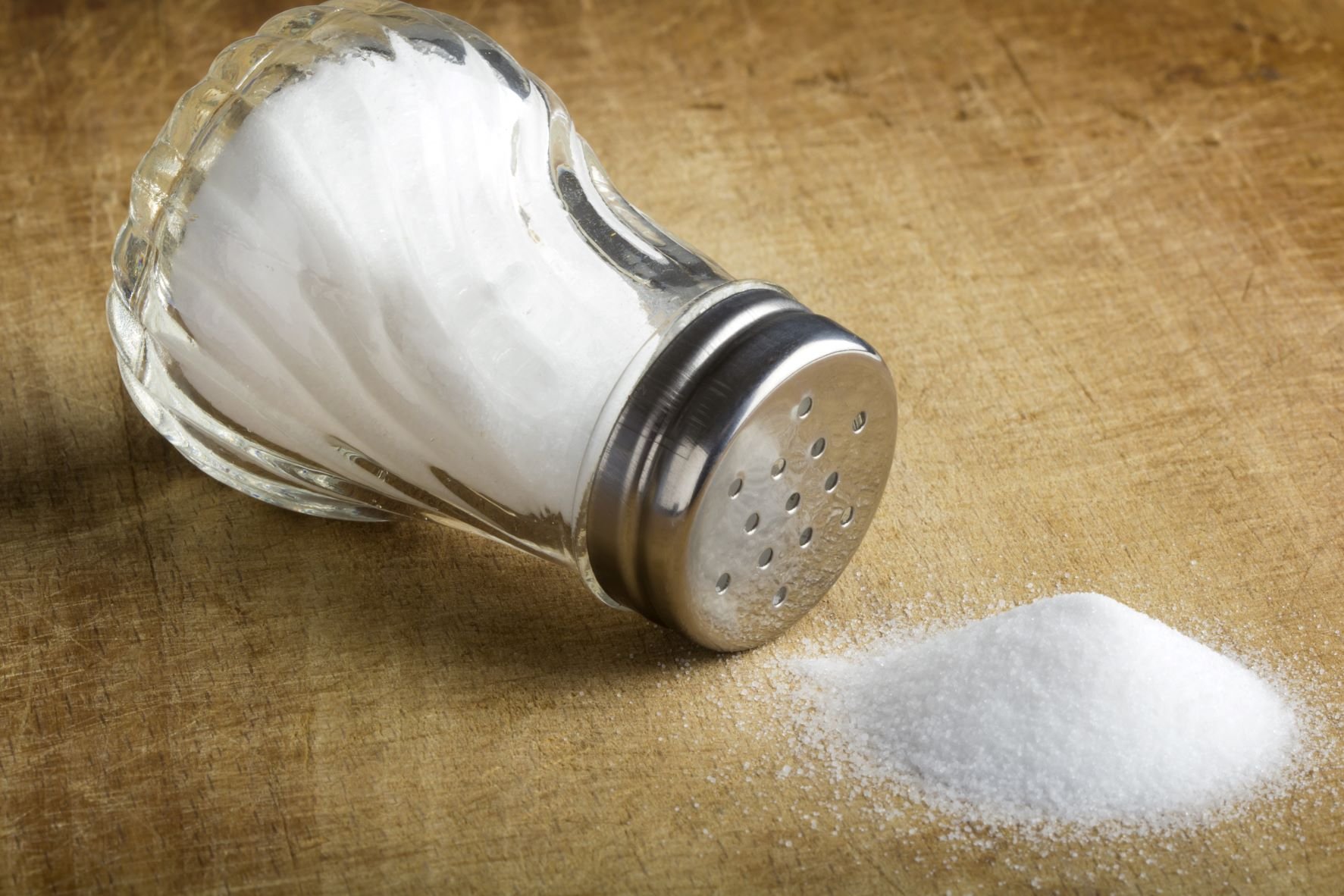Home>Misc>Featured>How Can Reducing Sodium Intake Improve Health?


Featured
How Can Reducing Sodium Intake Improve Health?
Published: September 6, 2023
Improve your health by reducing sodium intake! Learn how lowering the sodium in your diet can have a positive impact on your overall well-being. Featured article.
Introduction
Welcome to the world of SEO optimization! In this article, we will explore the fascinating and ever-evolving field of SEO, with a specific focus on Featured snippets. Featured snippets are a powerful tool for improving your website’s visibility in search engine results, and understanding how they work is essential for any SEO expert. From basic definitions to advanced strategies, we will cover all you need to know to master the art of optimizing for Featured snippets.
So, what exactly are Featured snippets? They are concise, informative summaries that appear at the top of search engine results pages (SERPs) in response to a user’s query. These snippets aim to provide direct answers to the user’s question, without requiring them to click through to a specific website. As an SEO expert, your goal is to position your content in such a way that it gets selected as a Featured snippet, significantly increasing its visibility and driving more organic traffic to your website.
Now that you have a basic understanding of what Featured snippets are, let’s delve deeper into the importance of incorporating them into your SEO strategy. Featured snippets can significantly increase click-through rates, as they are positioned prominently at the top of SERPs. This prime placement not only boosts your website’s visibility but also enhances its authority and credibility in the eyes of users.
Achieving a Featured snippet position requires careful content optimization. You need to understand the types of queries that are likely to generate Featured snippets and tailor your content accordingly. This involves strategically incorporating the target keyword in the page title, headings, and content. Additionally, you should focus on providing clear and concise answers to common questions in your niche, as Google tends to favor content that fulfills these criteria when selecting Featured snippets.
As an SEO expert, it is crucial to stay updated on the latest trends and developments in the world of Featured snippets. Google continues to refine its algorithms, and new types of Featured snippets are constantly emerging. By staying ahead of the curve, you can adapt your SEO strategy to maximize your chances of landing that coveted Featured snippet position.
In the upcoming sections of this article, we will explore various strategies and techniques for optimizing your content for Featured snippets. We will cover everything from structuring your content for maximum visibility to optimizing for specific types of Featured snippets. So, buckle up and get ready to take your SEO expertise to the next level!
What is Sodium?
Sodium is an essential mineral that plays a crucial role in maintaining the balance of fluids in our bodies. It is also important for proper nerve and muscle function. Sodium is primarily obtained from salt, which is commonly used as a seasoning in cooking and is present in many processed foods. While sodium is necessary for our bodies to function properly, consuming too much can have adverse effects on our health.
On a chemical level, sodium is an electrolyte that helps regulate the fluid levels in our cells and tissues. It works in conjunction with other electrolytes like potassium to maintain a stable balance of fluids both inside and outside our cells. This balance is vital for proper cell function and overall health.
Our bodies require a small amount of sodium daily to function optimally. The recommended daily intake for adults is around 2,300 milligrams, which roughly translates to one teaspoon of salt. However, most individuals exceed this recommended intake due to the high sodium content in many processed and packaged foods. Fast food, snacks, canned soups, and condiments are common culprits when it comes to high sodium levels in our diet.
Excessive sodium intake has been linked to a variety of health issues. The most common concern associated with high sodium consumption is hypertension, or high blood pressure. When we consume too much sodium, our bodies retain excess water to dilute the sodium concentration, leading to an increase in blood volume and pressure. Over time, this can put a strain on our cardiovascular system and increase the risk of heart disease and stroke.
In addition to impacting blood pressure, excessive sodium intake can also lead to water retention, causing swelling and bloating. This can be particularly problematic for individuals with conditions such as kidney disease or liver cirrhosis, as their bodies may struggle to efficiently regulate sodium levels. Furthermore, a high-sodium diet can contribute to the development of kidney stones and osteoporosis.
It is important to note that while sodium is found in table salt, there are other sources of dietary sodium as well. Many processed foods, such as frozen meals, canned soups, and packaged snacks, contain significant amounts of sodium as a preservative or flavor enhancer. Therefore, it is crucial to carefully read food labels and choose lower-sodium alternatives whenever possible.
In the next section, we will explore the link between sodium intake and health, gaining a deeper understanding of how reducing sodium intake can have a positive impact on our well-being.
The Link Between Sodium Intake and Health
The link between sodium intake and health is a topic of great significance and concern in the field of nutrition. Numerous studies have consistently shown that high levels of sodium consumption can have detrimental effects on our overall well-being. Understanding this connection empowers us to make informed dietary choices and take proactive steps towards improving our health.
One of the primary health concerns associated with excessive sodium intake is the development of hypertension, or high blood pressure. Sodium plays a significant role in regulating fluid balance in our bodies, and when we consume an abundance of sodium, this can lead to fluid retention and an increase in blood volume. This, in turn, puts added strain on our blood vessels and heart, raising our blood pressure levels. Over time, hypertension can increase the risk of cardiovascular diseases such as heart attacks, strokes, and heart failure.
Reducing sodium intake has been shown to be an effective strategy in managing and preventing hypertension. Multiple studies have demonstrated a clear correlation between lowering sodium consumption and reduced blood pressure levels. For individuals with hypertension or at risk of developing it, implementing a low-sodium diet can be a crucial step in managing their condition and protecting their cardiovascular health.
In addition to its impact on blood pressure, excessive sodium intake has been linked to other health concerns. There is evidence suggesting a connection between high sodium consumption and an increased risk of stomach cancer. Furthermore, a high-sodium diet has been associated with an increased risk of kidney disease, as it can contribute to the progression of existing kidney damage. Individuals with chronic kidney disease are often advised to limit their sodium intake to protect their kidney function.
It is important to note that reducing sodium intake is not only beneficial for those with pre-existing health conditions. Even individuals with normal blood pressure can benefit from maintaining a low-sodium diet, as it can help prevent the onset of hypertension and reduce the risk of cardiovascular diseases in the long run.
While lowering sodium intake is essential, it is equally crucial to balance it with other dietary considerations, such as increasing potassium intake. Potassium helps counterbalance the effects of sodium on blood pressure by promoting the excretion of excess sodium through urine. A diet rich in fruits, vegetables, and whole grains is naturally high in potassium and can help mitigate the negative effects of sodium in our bodies.
In the next section, we will explore the many benefits of reducing sodium intake and how it can positively impact our overall health and well-being.
Benefits of Reducing Sodium Intake
Reducing sodium intake offers a plethora of benefits for our overall health and well-being. From managing blood pressure to improving cardiovascular health, making conscious efforts to limit our sodium consumption can have a significant positive impact on our bodies. Let’s explore some of the key benefits of reducing sodium intake.
1. Blood pressure management: One of the primary benefits of reducing sodium intake is the management of blood pressure levels. High levels of sodium can lead to fluid retention and increased blood volume, resulting in elevated blood pressure. By reducing sodium consumption, individuals can lower their blood pressure and decrease the risk of developing hypertension or other cardiovascular conditions.
2. Improved cardiovascular health: Lowering sodium intake not only helps manage blood pressure but also promotes overall cardiovascular health. Studies have shown that high sodium intake is associated with increased risks of heart disease, stroke, and other cardiovascular events. By reducing sodium consumption, individuals can lower these risks and enhance their cardiovascular well-being.
3. Reduced risk of kidney disease: Excessive sodium intake has been linked to an increased risk of kidney disease progression. By limiting sodium consumption, individuals with chronic kidney disease can help preserve their kidney function and slow down the progression of the disease. Additionally, reducing sodium intake can help prevent the development of kidney stones, a painful condition that can be caused by high sodium levels.
4. Weight management: Many processed and packaged foods that are high in sodium are also high in calories. By reducing sodium intake and opting for fresh, whole foods, individuals can consume a healthier, more balanced diet. This can contribute to weight management and help prevent weight gain or promote weight loss, which in turn reduces the risk of obesity-related health issues.
5. Better digestion: High sodium intake has been associated with digestive disorders such as acid reflux and stomach ulcers. By reducing sodium consumption, individuals can alleviate symptoms related to these conditions and promote better digestive health.
6. Improved bone health: While sodium itself is not directly linked to bone health, high sodium intake is often associated with a diet that is low in nutrients essential for bone health, such as calcium and vitamin D. By reducing sodium intake, individuals can focus on consuming a more well-rounded and nutrient-rich diet that supports optimal bone health.
7. Enhanced flavor appreciation: By gradually reducing sodium intake, individuals can train their taste buds to become more sensitive to the natural flavors of foods. This can lead to a greater appreciation for the subtle tastes and aromas of ingredients, making meals more enjoyable and satisfying.
These are just a few of the many benefits of reducing sodium intake. By making conscious choices to lower sodium consumption, individuals can take control of their health and improve their overall well-being.
Strategies for Reducing Sodium Intake
Reducing sodium intake can be a challenging task, especially considering the widespread use of salt in our diets and the high sodium content in many processed foods. However, with the right strategies and mindset, it is possible to gradually lower sodium consumption and make healthier choices. Here are some effective strategies for reducing sodium intake:
1. Read food labels: Start by becoming familiar with the sodium content listed on food labels. Understand the portion size and the amount of sodium per serving. Look for products with lower sodium content and choose those as alternatives whenever possible.
2. Cook at home: When you prepare meals from scratch, you have complete control over the ingredients and their sodium content. Use herbs, spices, and other natural seasonings to enhance the flavor of your dishes instead of relying solely on salt.
3. Choose fresh, whole foods: Fresh fruits, vegetables, and unprocessed meats are naturally low in sodium. Incorporate these foods into your diet as the foundation of your meals. Avoid heavily processed foods, as they often contain high amounts of sodium as a preservative.
4. Limit processed and packaged foods: Processed and packaged foods, such as frozen meals, canned soups, and pre-packaged snacks, are often loaded with sodium. Opt for homemade alternatives or look for low-sodium options when purchasing these types of products.
5. Be mindful of condiments and sauces: Many condiments and sauces, such as soy sauce, ketchup, and salad dressings, are high in sodium. Look for lower-sodium versions or make your own healthier alternatives with fresh ingredients at home.
6. Gradually reduce salt usage: Train your taste buds to adapt to lower sodium levels by gradually reducing the amount of salt you use in your cooking. Experiment with herbs, spices, and other flavor enhancers to add depth to your dishes without relying on salt.
7. Limit eating out: Restaurant meals tend to be high in sodium due to the use of added seasonings and sauces. When eating out, choose dishes that are steamed, grilled, or broiled, and ask for sauces and dressings on the side so that you can control the amount you consume.
8. Drink plenty of water: Staying properly hydrated helps flush out excess sodium from your body. Aim to drink the recommended amount of water each day to support your overall health and promote sodium balance.
9. Meal planning and preparation: Plan your meals in advance and prepare them at home whenever possible. This gives you more control over the ingredients and their sodium content. Consider using herbs, spices, and other natural flavorings to create delicious and satisfying meals.
By implementing these strategies and gradually reducing sodium intake, you can make significant progress towards a healthier and lower-sodium diet. Be patient with yourself and celebrate each small step you take towards a lifestyle that supports your well-being.
Sodium-reduced Alternatives and Substitutes
Reducing sodium intake doesn’t mean sacrificing taste or flavor. There are many alternatives and substitutes available that can help you lower your sodium consumption without compromising on the enjoyment of your meals. By incorporating these options into your cooking and meal preparation, you can still savor delicious flavors while promoting a healthier lifestyle. Here are some sodium-reduced alternatives and substitutes to consider:
1. Herbs and spices: Herbs and spices are excellent flavor enhancers that can add depth and complexity to your dishes. Experiment with a wide range of herbs like basil, thyme, rosemary, and spices such as cumin, paprika, turmeric, and ginger to bring out the natural flavors of your ingredients without relying on excessive salt.
2. Vinegars and citrus juices: Vinegars, such as balsamic or apple cider vinegar, and citrus juices like lemon or lime juice, can provide a zesty kick to your meals. They add brightness and tanginess, enhancing the overall flavor profile without the need for extra sodium.
3. Low-sodium soy sauce and tamari: Traditional soy sauce is high in sodium, but there are low-sodium alternatives available. Look for reduced-sodium soy sauce or tamari, which can still provide that savory umami flavor while minimizing sodium intake.
4. Homemade marinades and dressings: Commercially prepared marinades and dressings often contain high amounts of sodium. Make your own at home using herbs, spices, vinegar, and a small amount of salt to control the sodium content and create delicious flavor combinations.
5. Low-sodium broths and stocks: Broths and stocks are commonly used as a base for soups, stews, and sauces, but they can be high in sodium. Opt for low-sodium or no-sodium versions, or even better, try making your own broth using fresh ingredients and herbs for a healthier and flavorful alternative.
6. Fresh fruits and vegetables: Incorporate a variety of fresh fruits and vegetables into your meals to add natural sweetness, crunch, and vibrant flavors. They bring color, texture, and nutrients to your dishes while naturally being low in sodium.
7. Natural sweeteners: When reducing sodium intake, it’s important to keep an eye on added sugars as well. Instead of reaching for processed sugars, opt for natural sweeteners like honey, maple syrup, or stevia to add sweetness to your recipes.
8. Sea salt alternatives: If you still prefer to use some salt in your cooking, consider options like Himalayan pink salt or celery salt, which have a lower sodium content than regular table salt. However, use them sparingly to keep your overall sodium intake in check.
Remember, a gradual shift to these alternatives and substitutes is key. Start by making small changes and adjusting your taste preferences over time. By incorporating these sodium-reduced options into your culinary repertoire, you can continue to enjoy flavorful and satisfying meals while promoting a healthier lifestyle.
Tips for Incorporating a Low-sodium Diet
Adopting a low-sodium diet may seem challenging at first, but with the right strategies and tips, you can successfully reduce your sodium intake and support a healthier lifestyle. Here are some practical tips for incorporating a low-sodium diet into your daily routine:
1. Focus on whole, unprocessed foods: Base your meals around whole, unprocessed foods such as fruits, vegetables, lean proteins, whole grains, and legumes. These foods are naturally low in sodium and provide essential nutrients for optimal health.
2. Read food labels: Be mindful of the sodium content listed on food labels. Aim for products with lower sodium levels, and watch out for hidden sources of sodium, such as added preservatives or flavor enhancers.
3. Prepare meals at home: Cooking your meals from scratch gives you full control over the ingredients and allows you to limit the amount of sodium added. Experiment with herbs, spices, and other flavorings to enhance the taste of your dishes without relying on salt.
4. Reduce the use of processed and packaged foods: Processed and packaged foods are often high in sodium. Minimize your consumption of these products and opt for fresh alternatives whenever possible.
5. Choose low-sodium alternatives: When shopping, look for low-sodium versions of condiments, sauces, broths, and canned goods. These alternatives can help you lower your overall sodium intake without compromising on flavor.
6. Be mindful of restaurant meals: When dining out, be cautious of high sodium dishes. Choose restaurants that offer low-sodium options or make specific requests to reduce salt in your meal preparation.
7. Gradually reduce salt usage: Train your taste buds to adapt to lower sodium levels by gradually reducing the amount of salt you use in cooking. Over time, you will become accustomed to the natural flavors of foods and find yourself needing less salt.
8. Experiment with herbs and spices: Use a variety of herbs, spices, and other flavorings to add depth and richness to your meals. Try combinations of basil, oregano, thyme, rosemary, paprika, cumin, turmeric, and ginger to create delicious flavors.
9. Stay hydrated: Proper hydration helps flush out excess sodium from your body. Drink plenty of water throughout the day to support kidney function and maintain a healthy balance of fluids.
10. Get creative with meal planning: Explore new recipes and methods of cooking that emphasize fresh ingredients, herbs, and spices. Find inspiration in cuisines that naturally contain lower amounts of sodium, such as Mediterranean or Asian dishes.
Remember, adopting a low-sodium diet is a gradual process. Be patient with yourself and celebrate small victories along the way. By making conscious choices and incorporating these tips into your lifestyle, you can successfully reduce your sodium intake and promote better overall health.
Potential Challenges and Solutions
While incorporating a low-sodium diet can offer numerous health benefits, it is not without its challenges. It’s important to be aware of these potential roadblocks and have strategies in place to overcome them. Here are some common challenges you may encounter when adopting a low-sodium diet and practical solutions to tackle them:
1. Taste adjustment: The reduction of sodium in your diet may initially lead to a perceived lack of flavor in your meals. To overcome this challenge, experiment with different herbs, spices, and alternative seasonings to enhance the taste of your dishes. Gradually train your taste buds to appreciate the natural flavors of foods without relying on excessive sodium.
2. Social situations: Dining out or eating with friends and family who do not follow a low-sodium diet can be challenging. Communicate your dietary needs and preferences to those around you, and be proactive in suggesting restaurants or dishes that align with your goals. Look for low-sodium menu options or consider hosting gatherings and cooking meals that cater to your dietary needs.
3. Cravings and temptations: It is natural to experience cravings for high-sodium foods, especially during the transition to a low-sodium diet. Plan satisfying and flavor-packed meals that align with your dietary goals to reduce the temptation to indulge in sodium-rich foods. Keep healthier snack options readily available to avoid reaching for processed, high-sodium snacks.
4. Label reading and ingredient awareness: Understanding the sodium content of foods can be overwhelming, especially when reading food labels. Take the time to educate yourself about hidden sources of sodium and familiarize yourself with alternative names for sodium-containing ingredients. This will help you make informed choices and navigate grocery shopping more effectively.
5. Sodium in dining and convenience foods: Many dining and convenience foods are notoriously high in sodium. To combat this, opt for homemade versions of your favorite dishes where you have control over the sodium content. Plan your meals in advance and batch cook healthier alternatives to have on hand when you’re short on time or faced with limited options.
6. Withdrawal symptoms: As you reduce your sodium intake, you may experience withdrawal symptoms initially, such as headaches or fatigue. This is due to the body adjusting to lower sodium levels. Be patient and stay hydrated. Gradually reducing your intake, rather than drastically cutting it out, can help mitigate these symptoms.
7. Warning of low-sodium products: While it’s important to choose low-sodium alternatives, be cautious of products that replace salt with artificial additives. Look for products that are naturally low in sodium rather than relying on heavily processed substitutes.
Remember, every individual’s journey towards a low-sodium diet will be unique. It may take time to overcome these challenges, but with persistence and a proactive approach, it is possible to make sustainable changes to your eating habits. Focus on the long-term benefits to stay motivated and seek support from healthcare professionals, dieticians, or support groups if needed.
Conclusion
Incorporating a low-sodium diet can have a significant positive impact on your health and well-being. By reducing sodium intake, you can manage blood pressure, improve cardiovascular health, and reduce the risk of various health conditions. While it may initially present challenges, such as taste adjustments and navigating social situations, there are practical solutions to overcome these obstacles.
Start by focusing on whole, unprocessed foods, reading food labels, and gradually reducing salt usage in your cooking. Experiment with herbs, spices, and other flavoring alternatives to enhance the taste of your meals. Plan and prepare your own meals to have better control over your sodium intake. Stay hydrated, be mindful of dining out, and be patient with yourself during the transition.
Remember, incorporating a low-sodium diet is a journey and may require adjustments and perseverance. Seek support from healthcare professionals, dieticians, or support groups for guidance and motivation along the way.
By adopting a low-sodium diet, you are taking an important step towards improving your overall health and reducing the risk of various health conditions. Embrace the opportunity to explore new flavors, get creative in the kitchen, and nourish your body with wholesome, nutritious foods. Maintaining a well-balanced, low-sodium diet will not only benefit you physically but also contribute to your overall sense of well-being.









